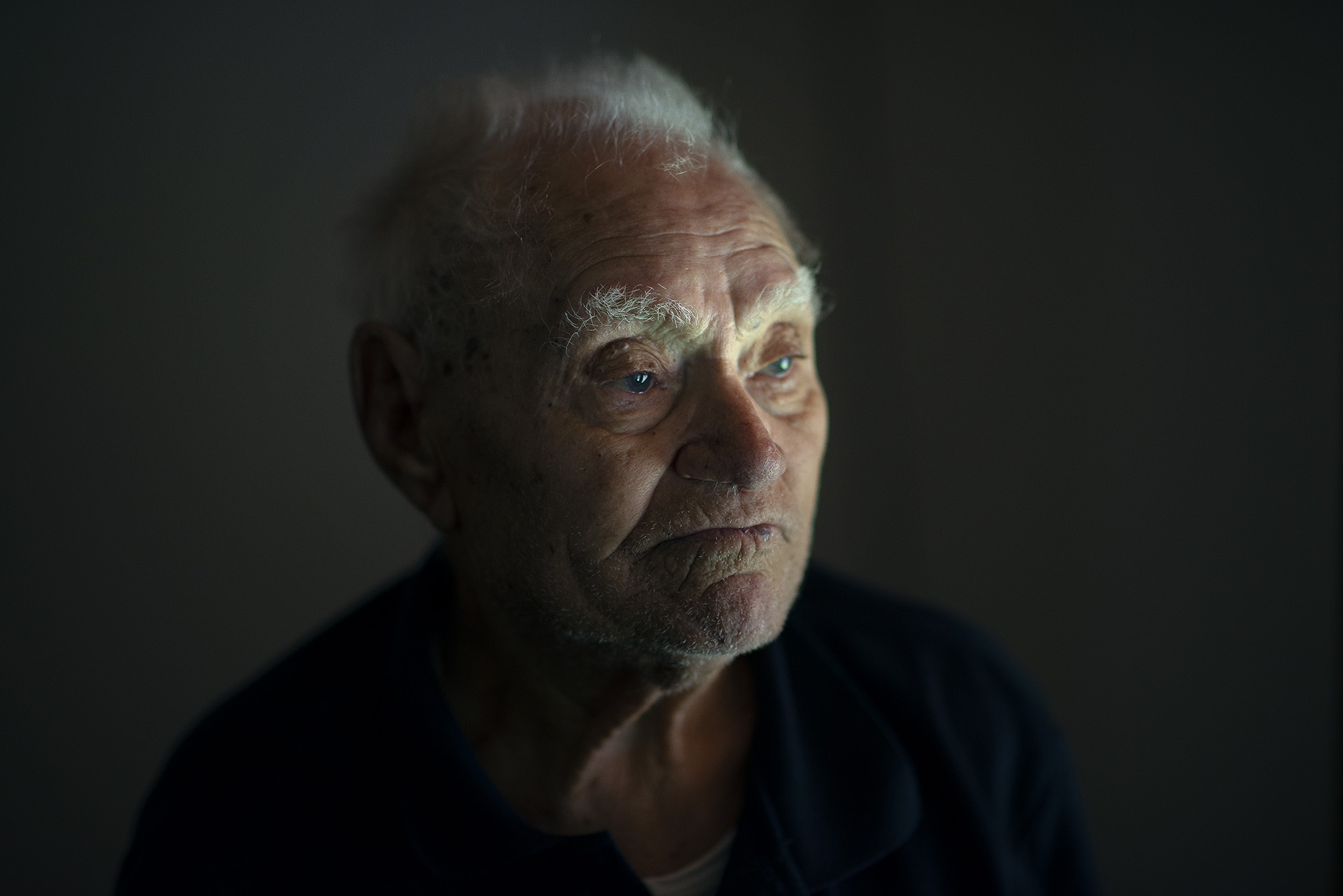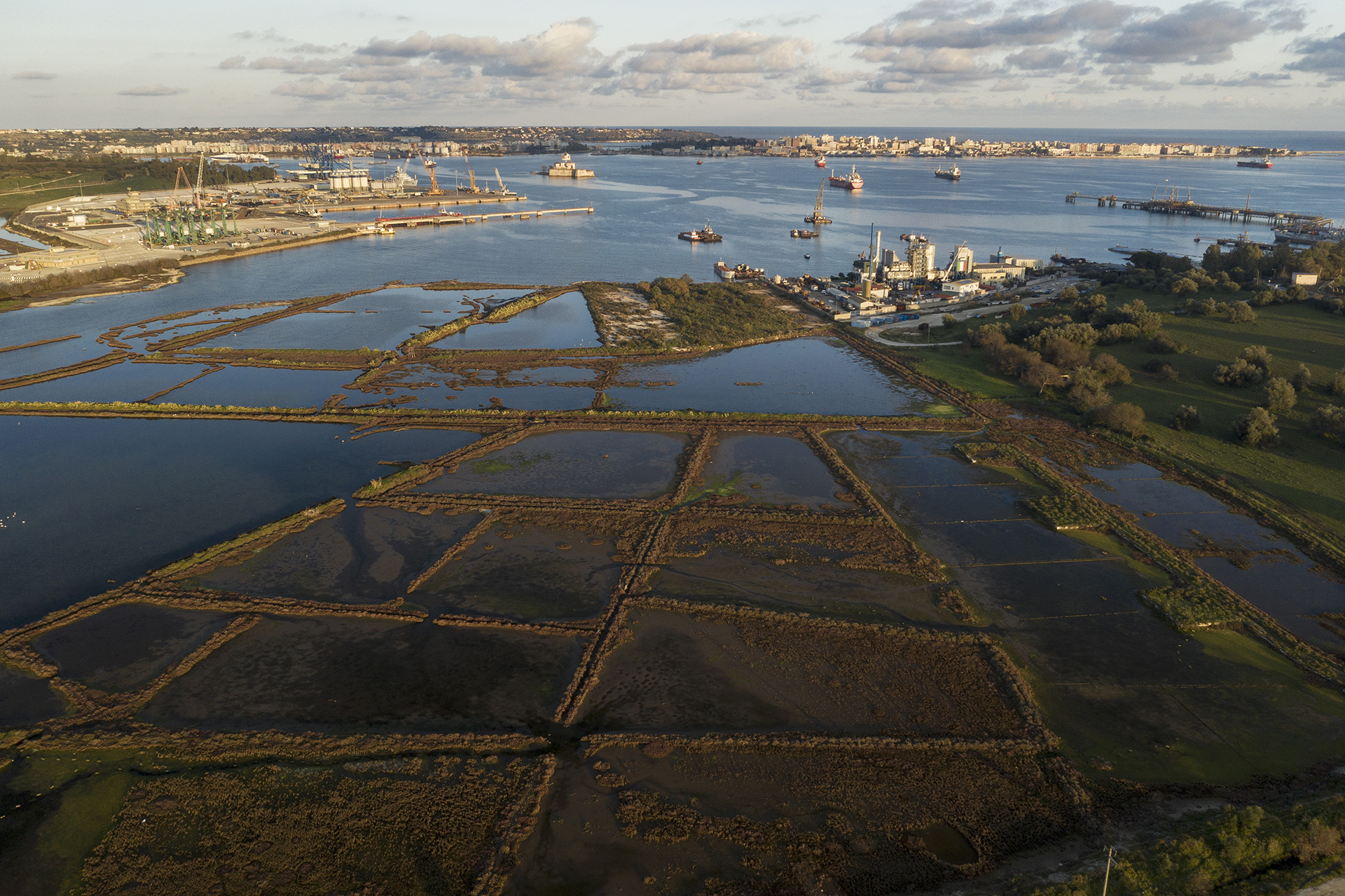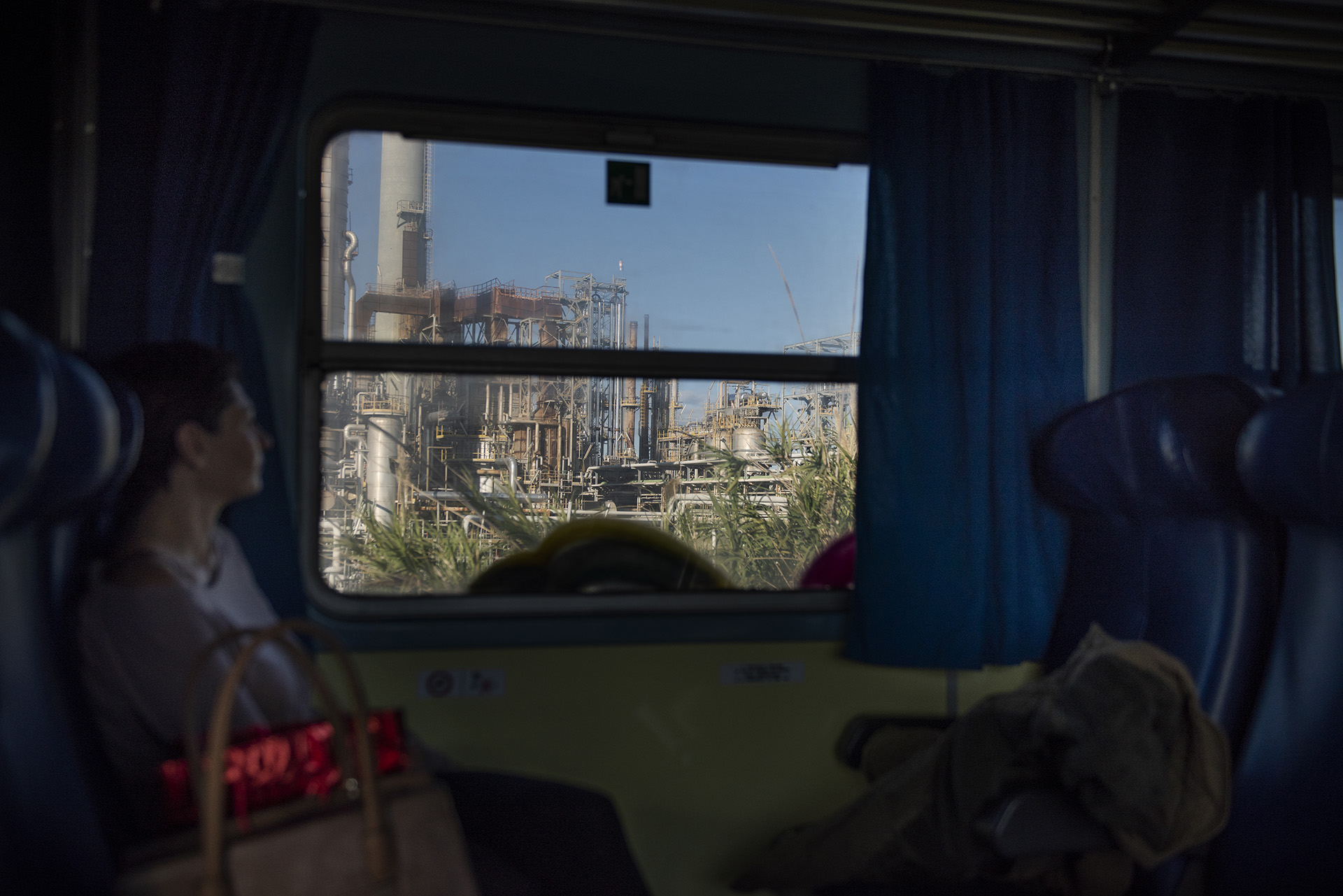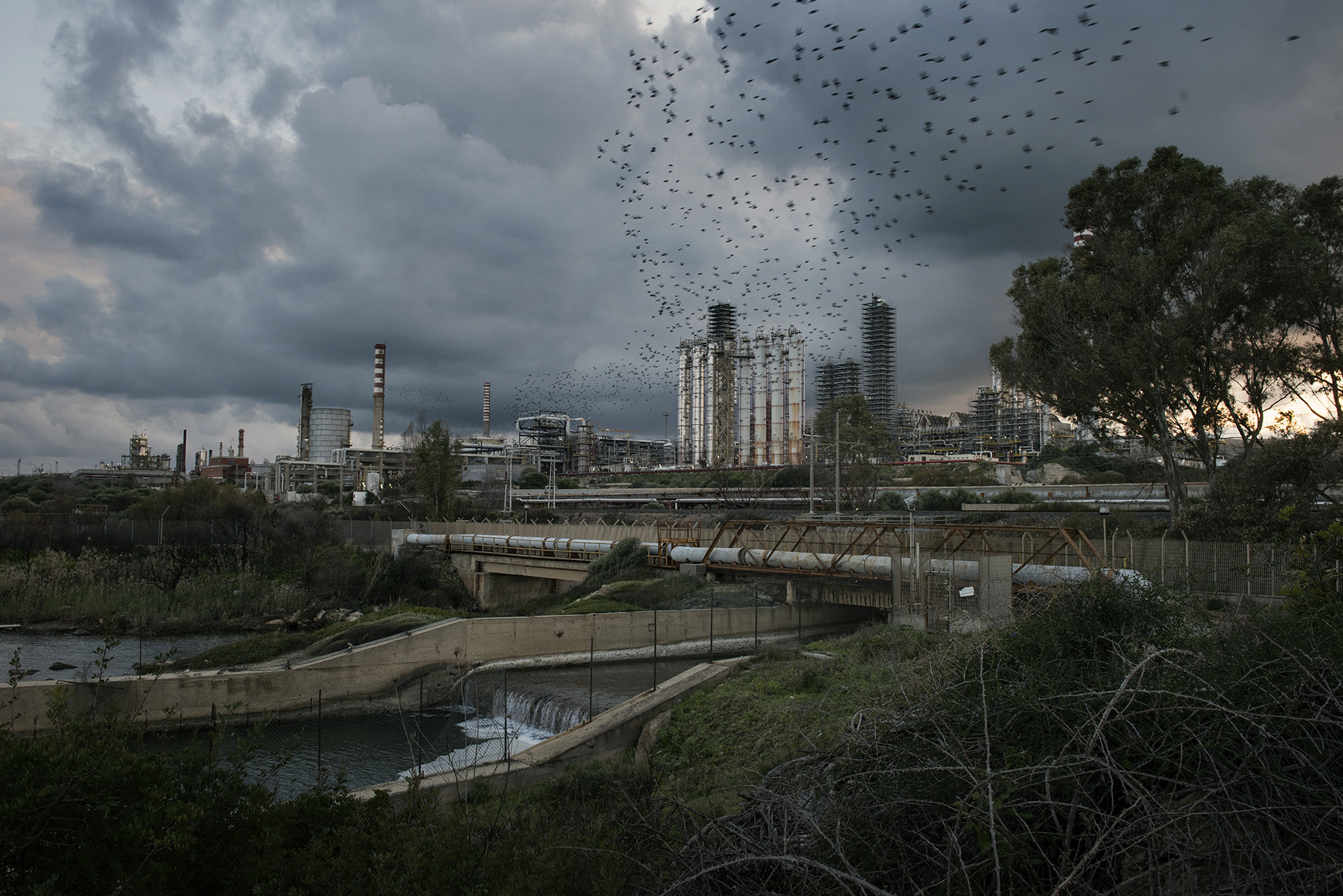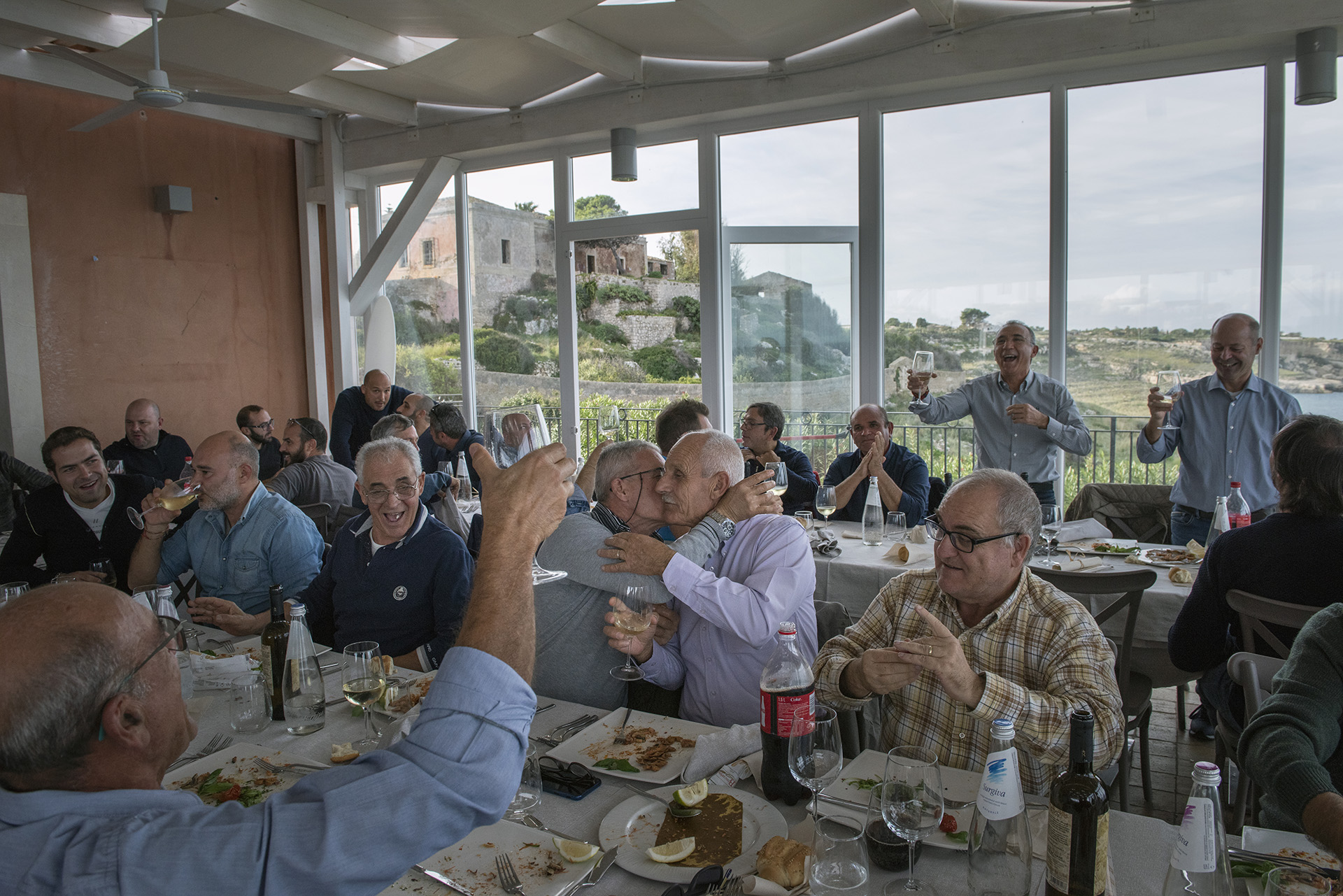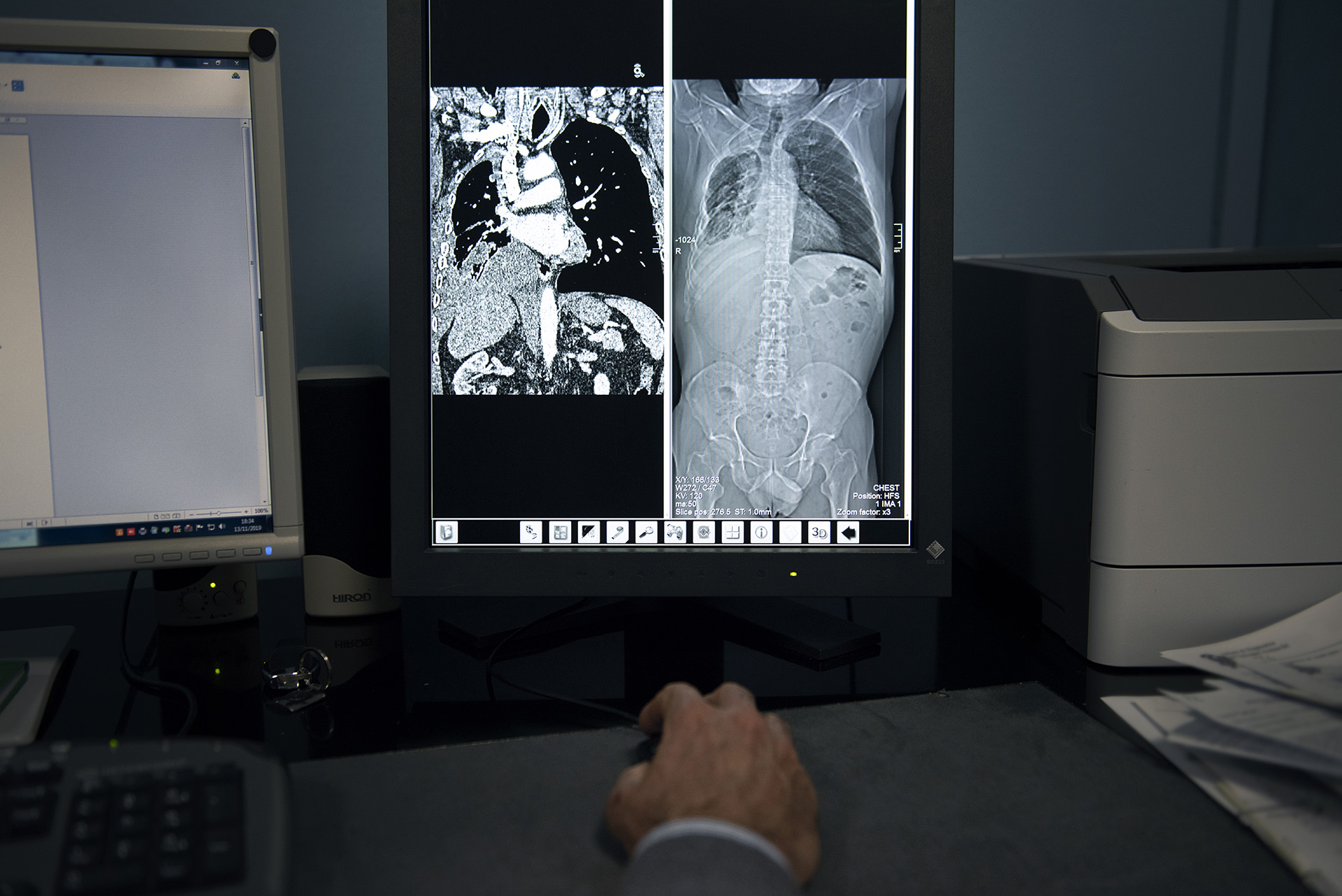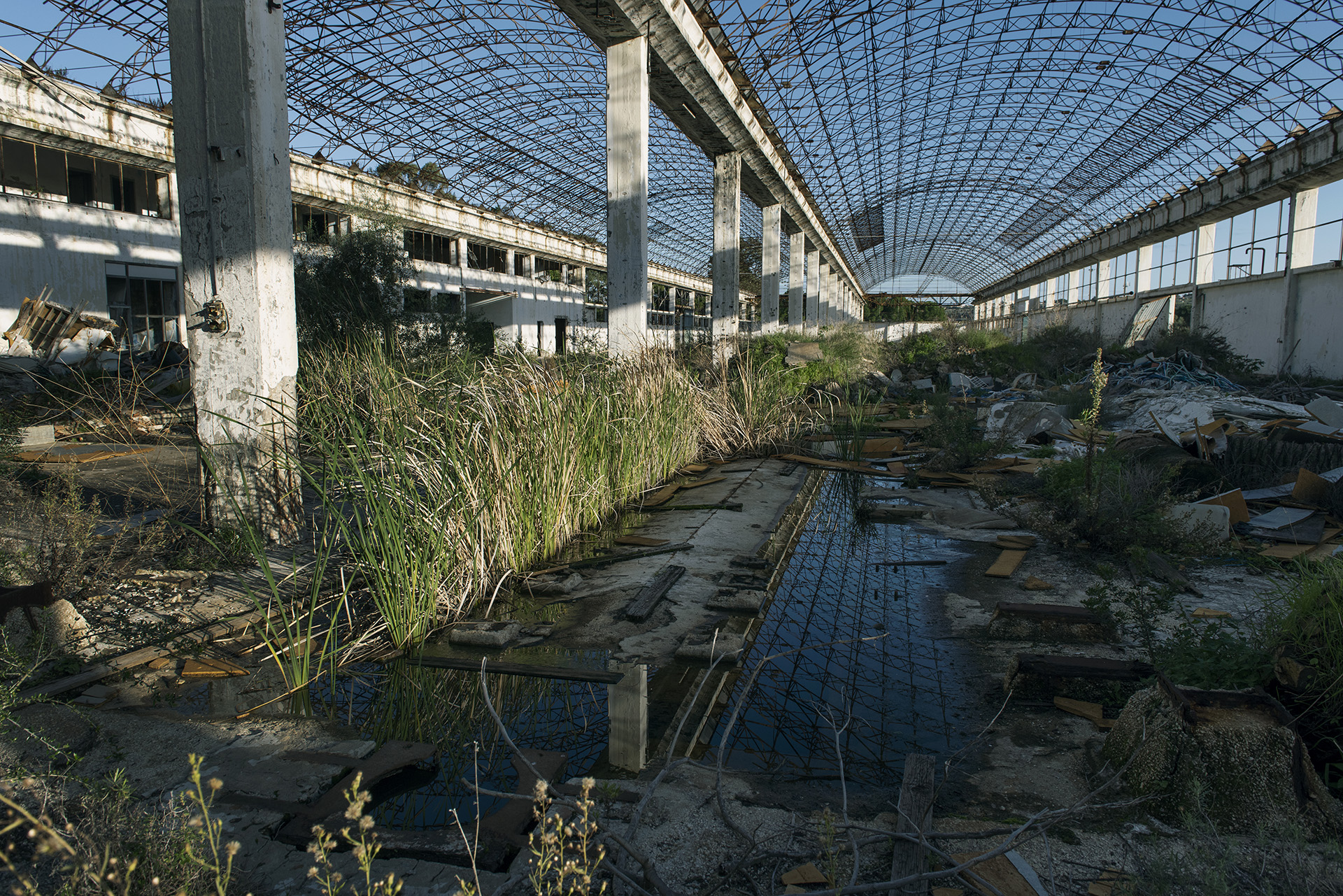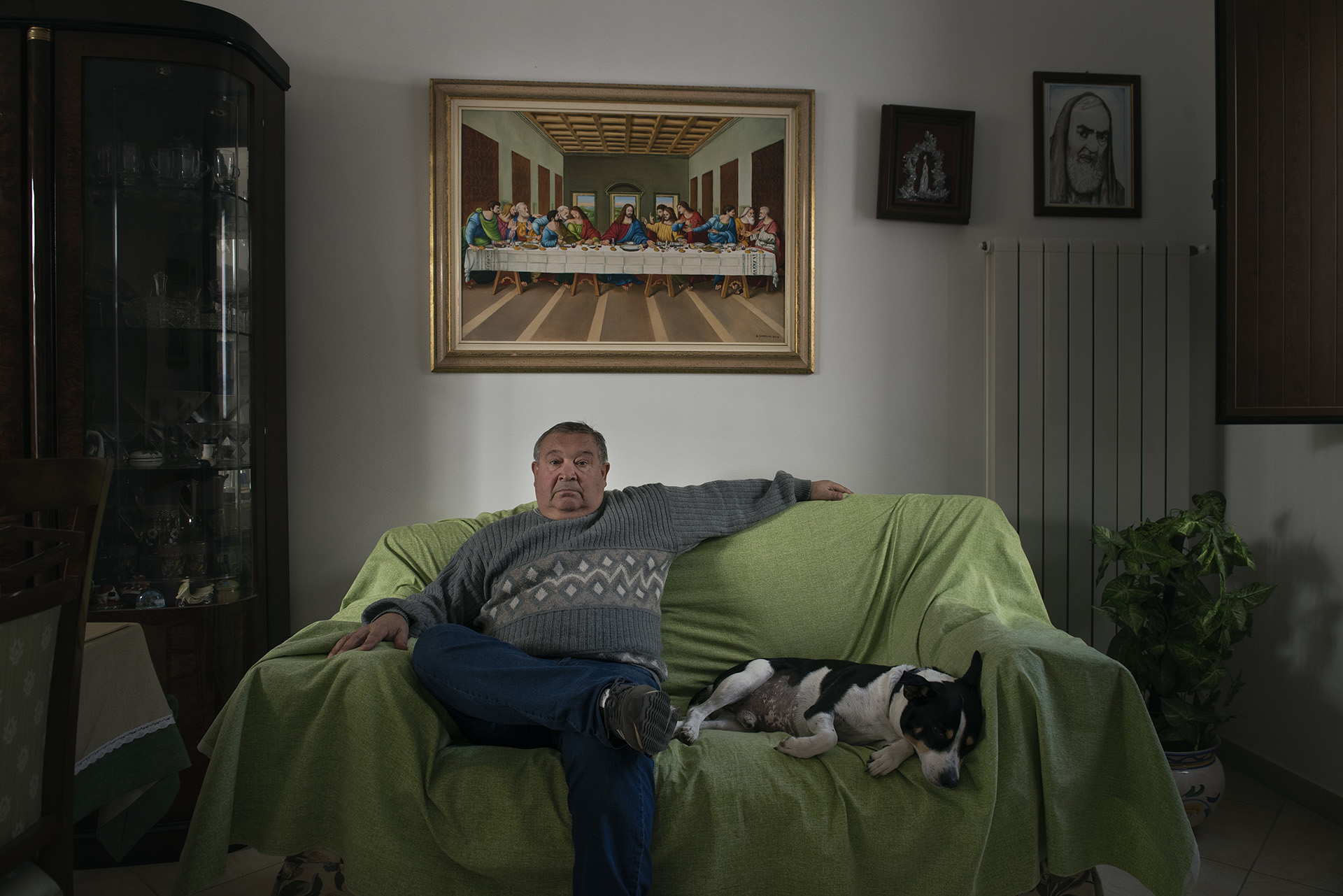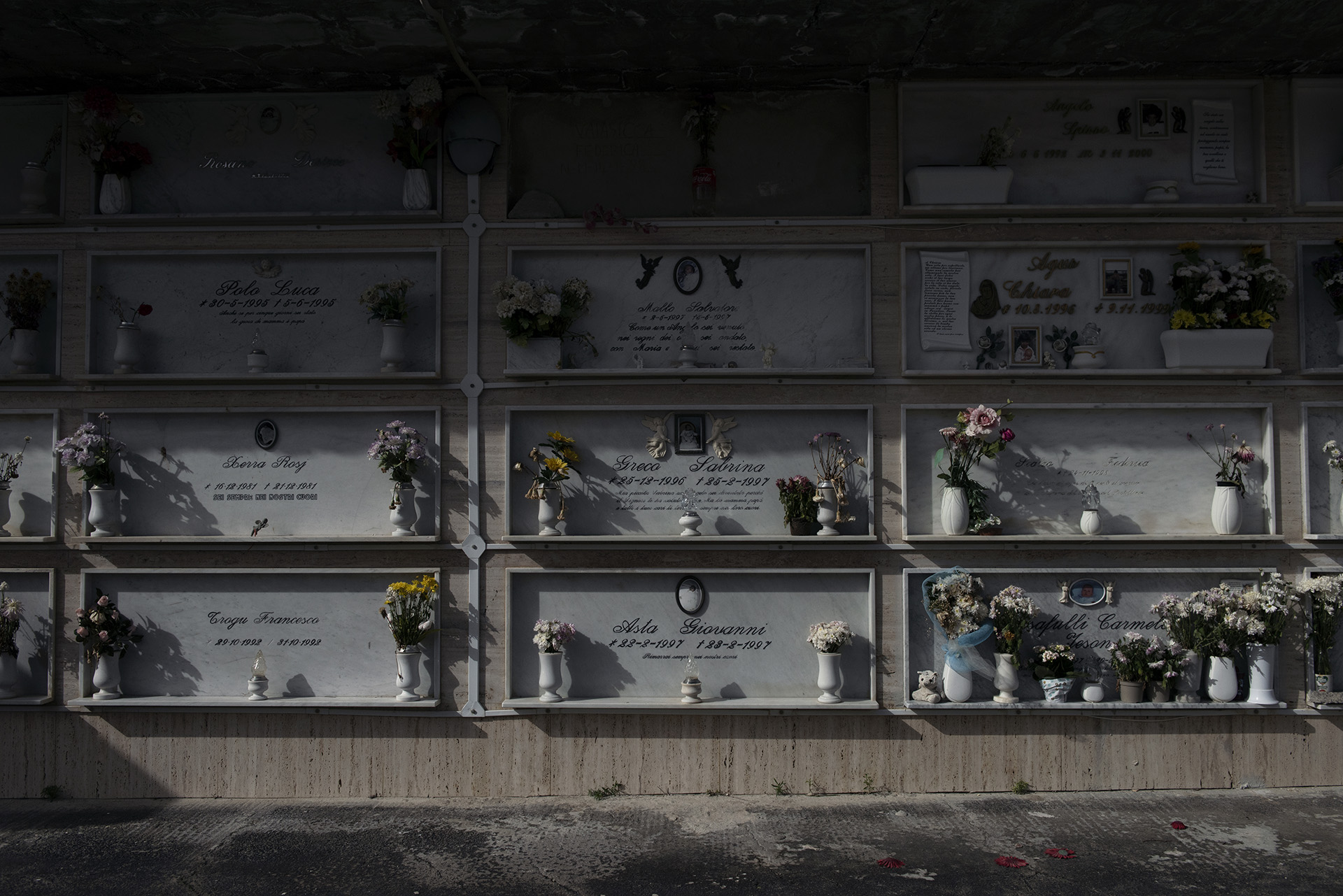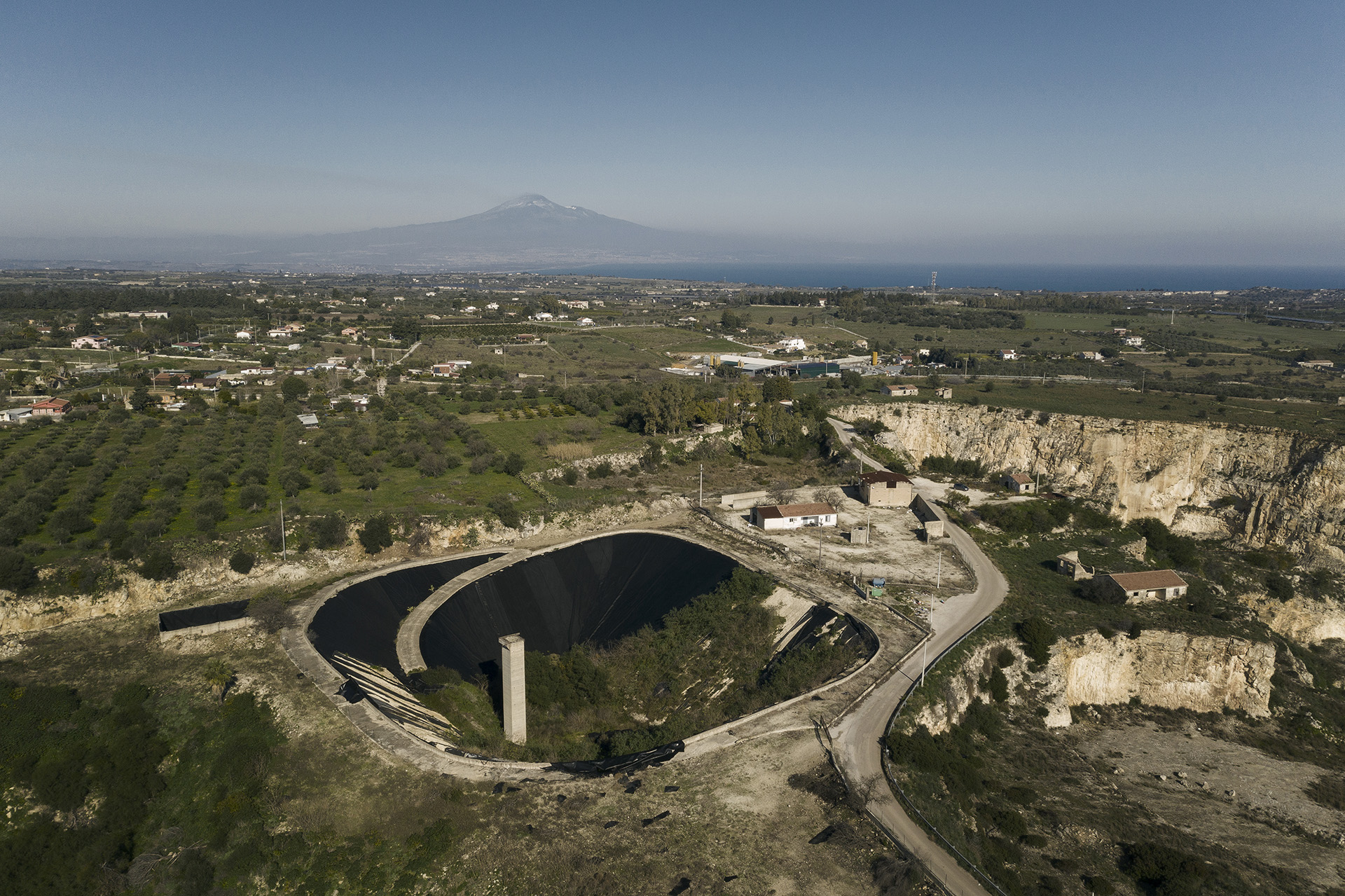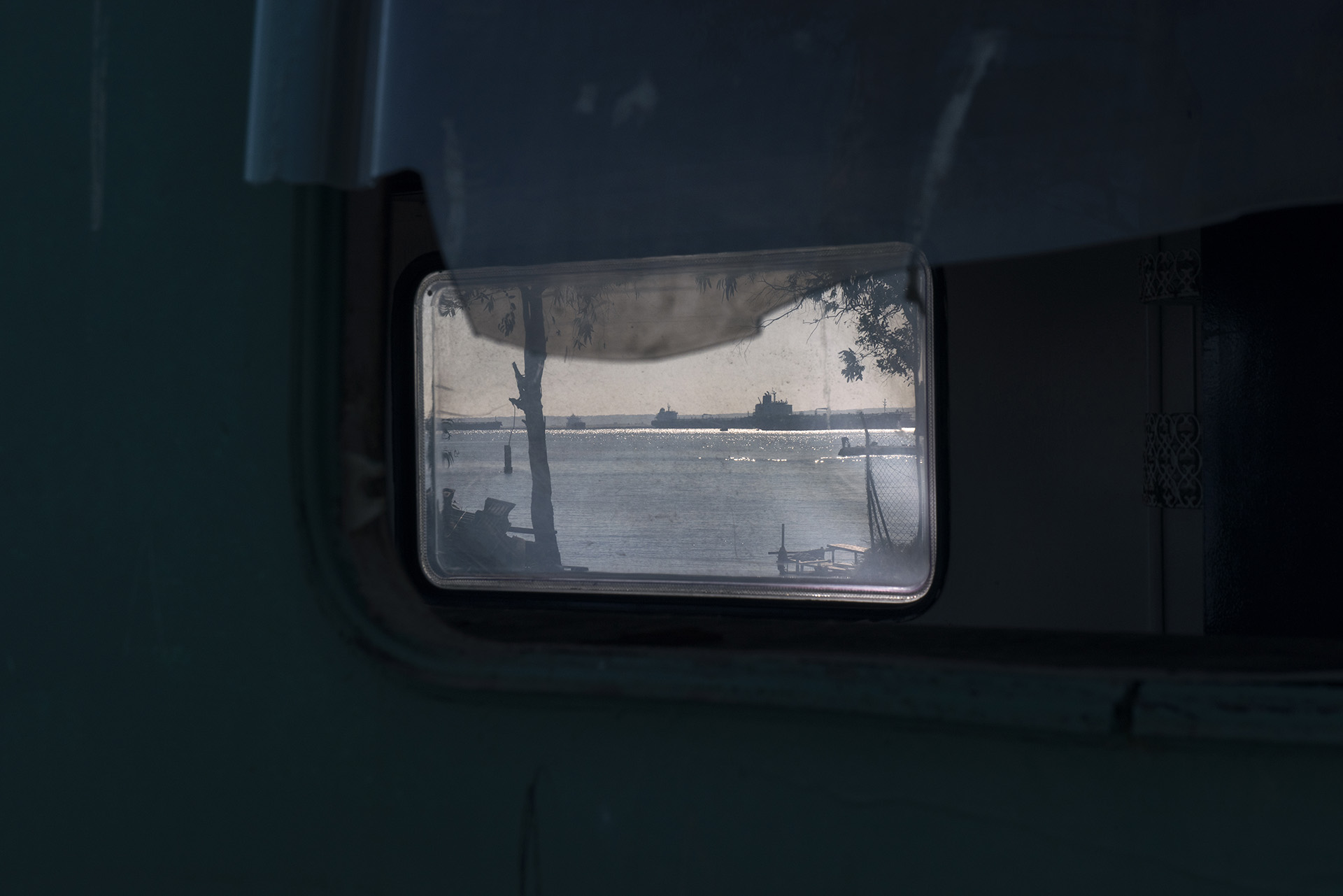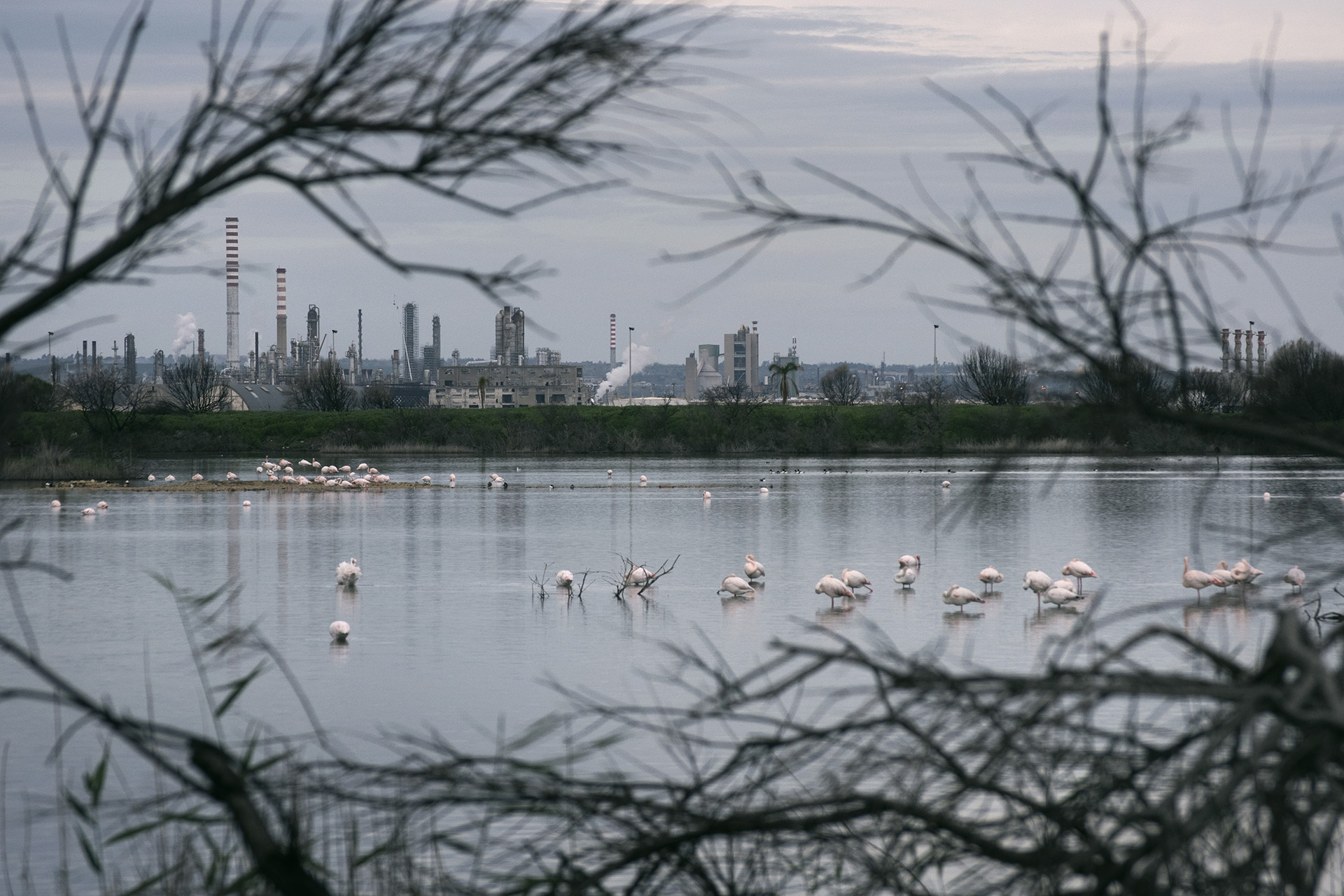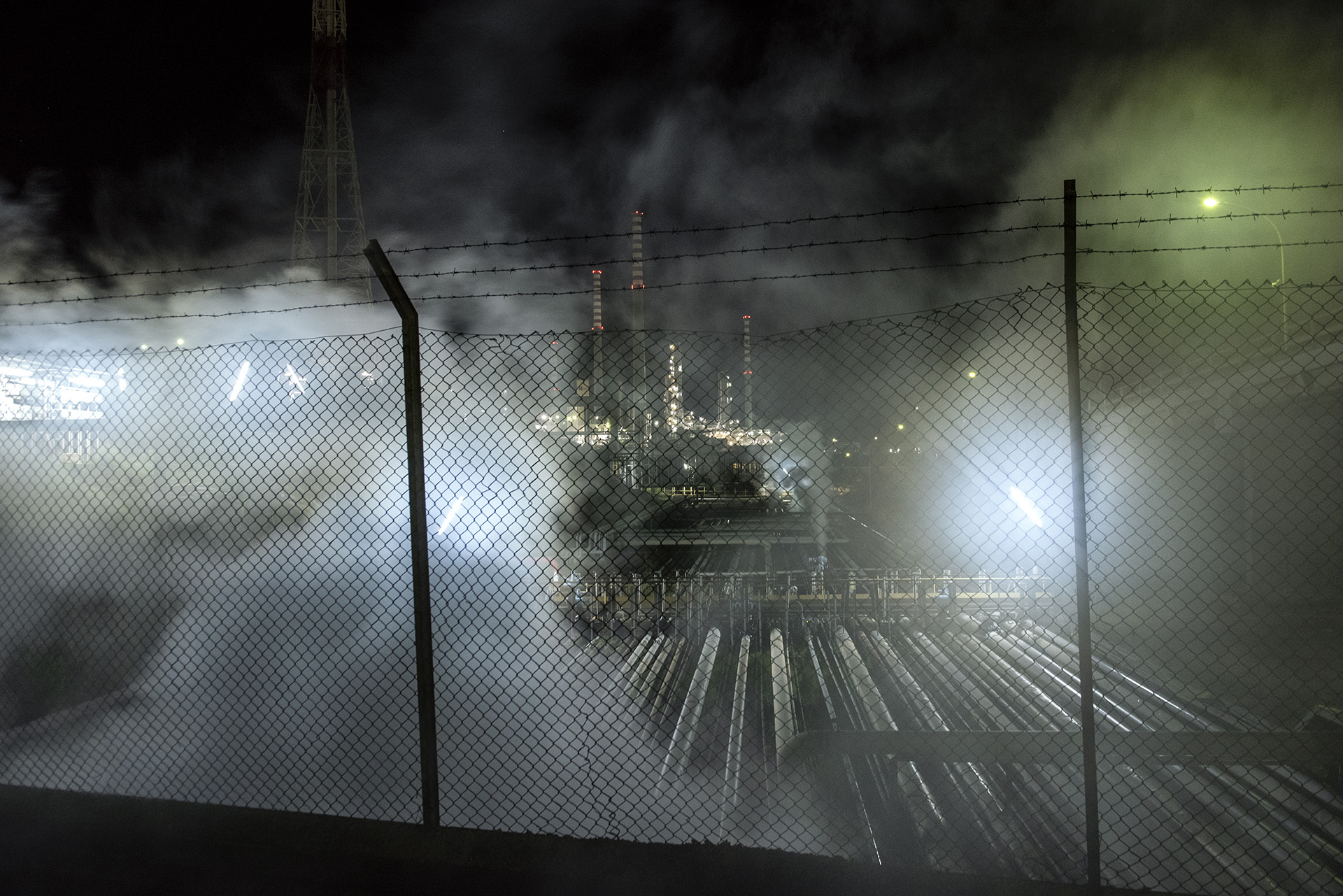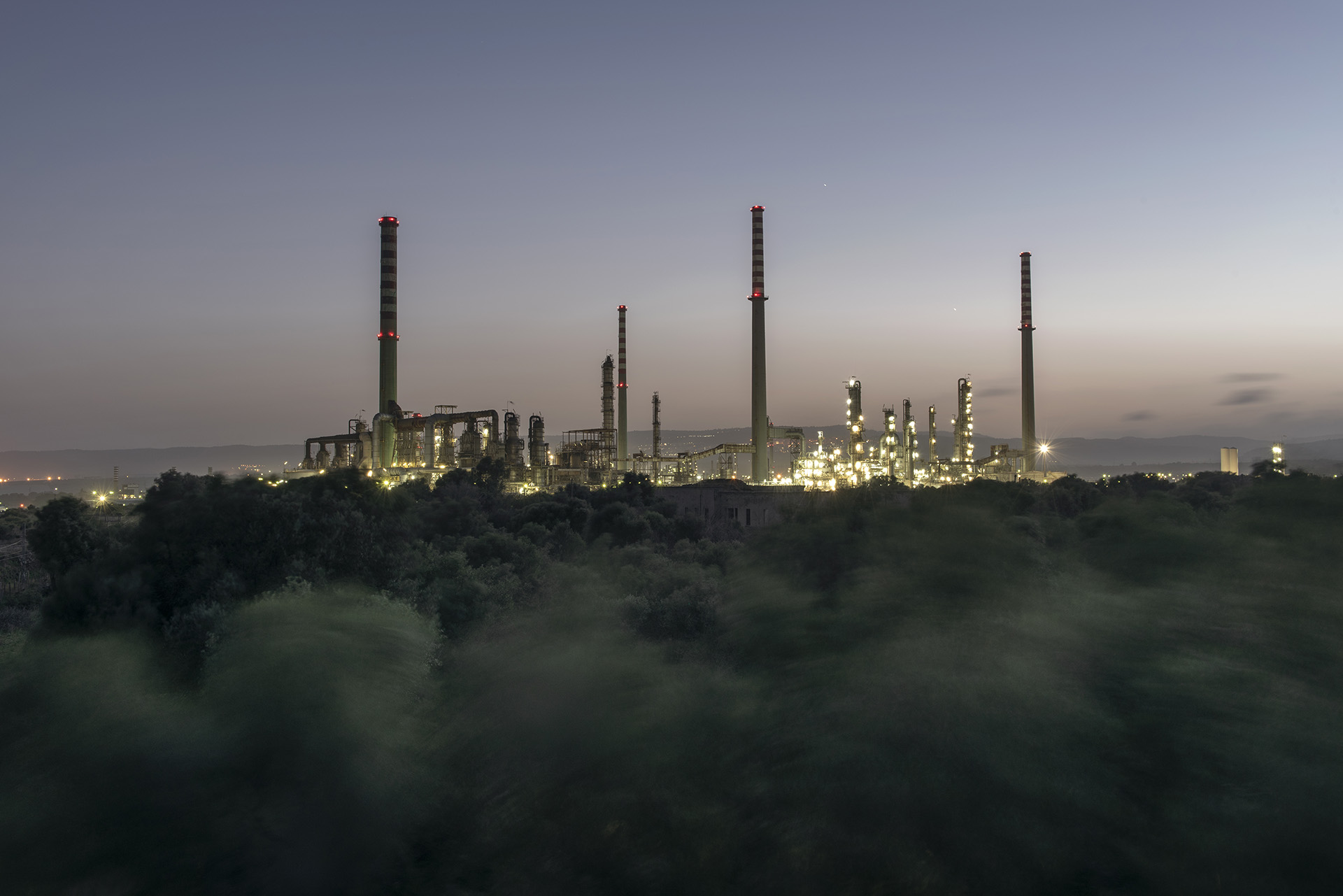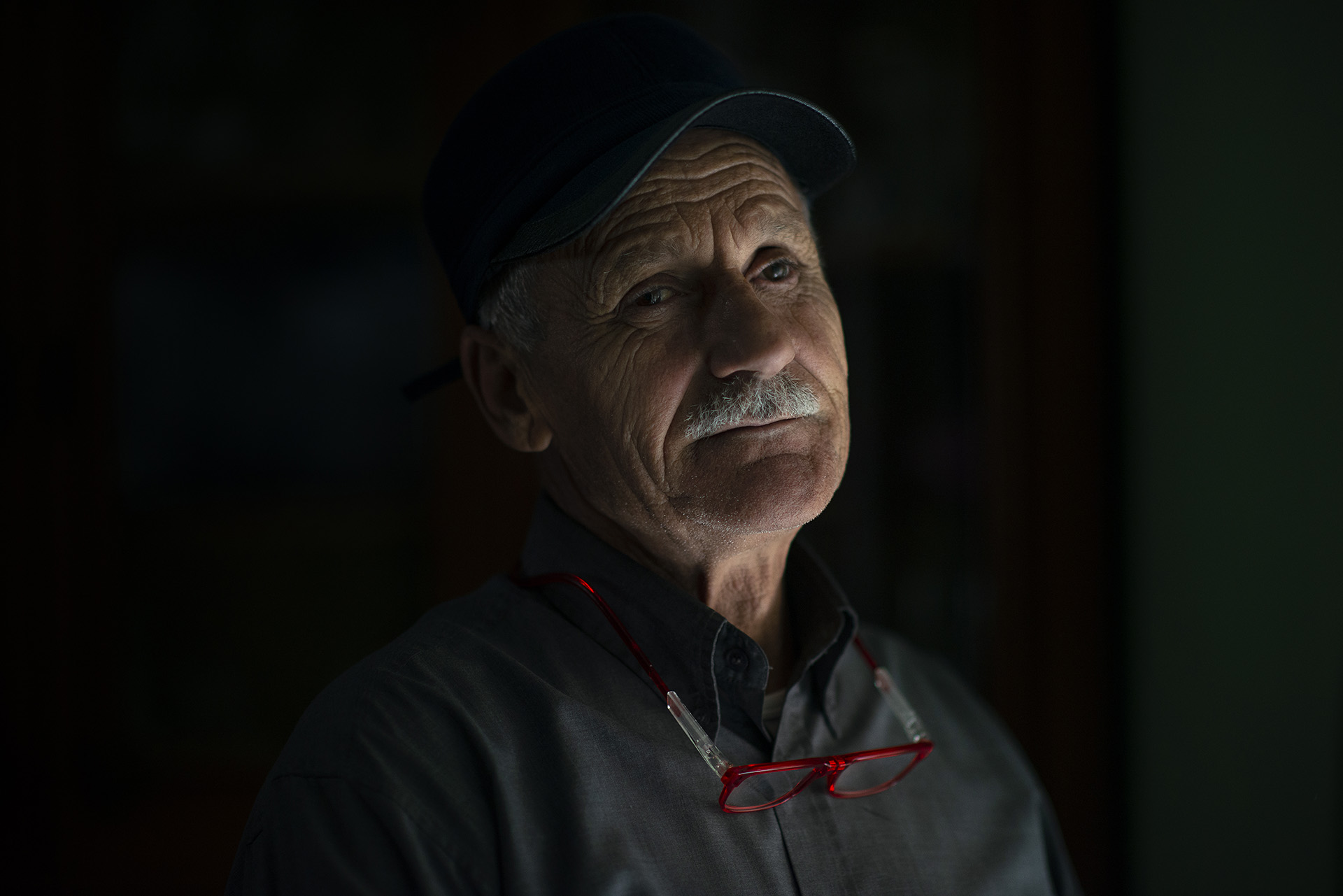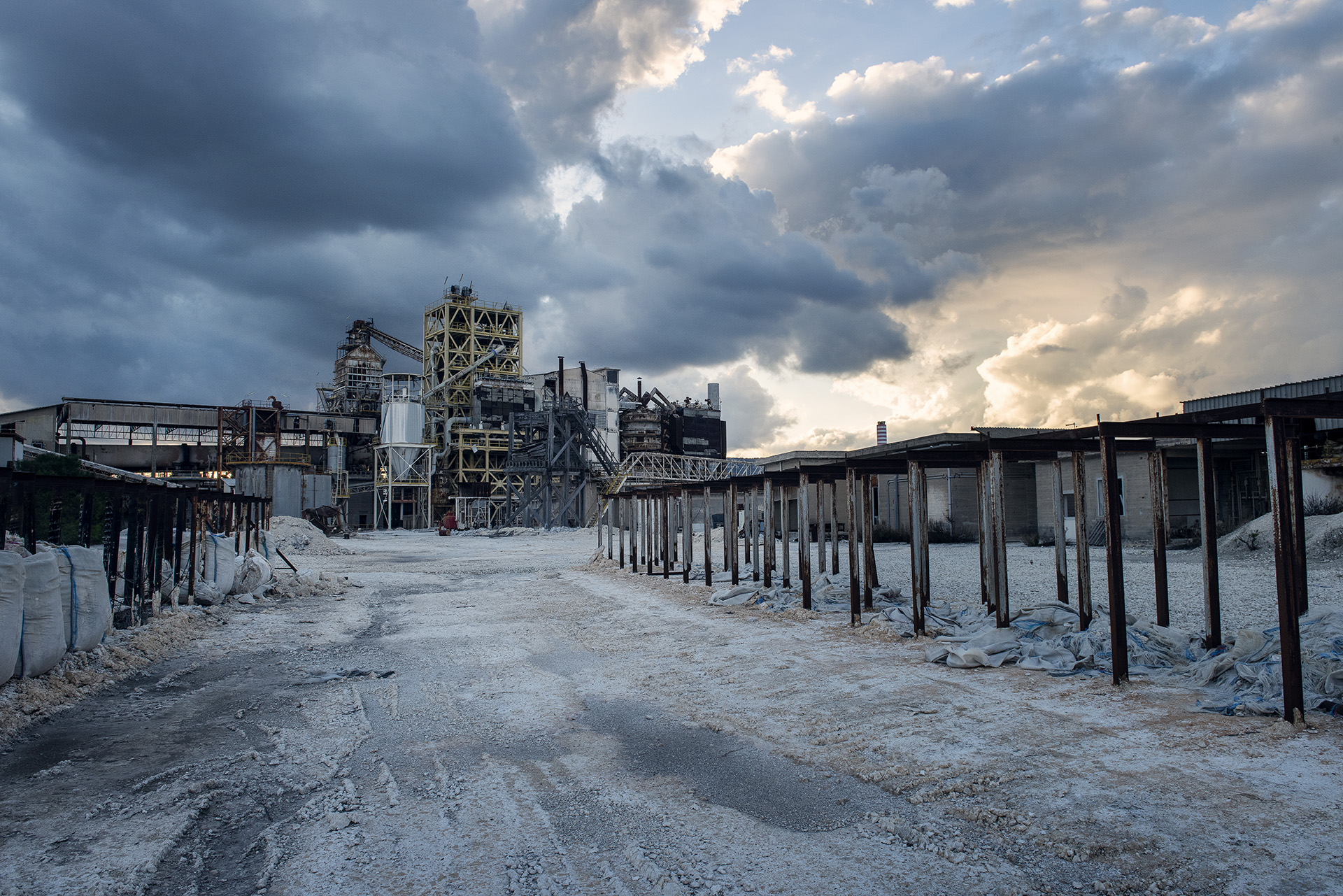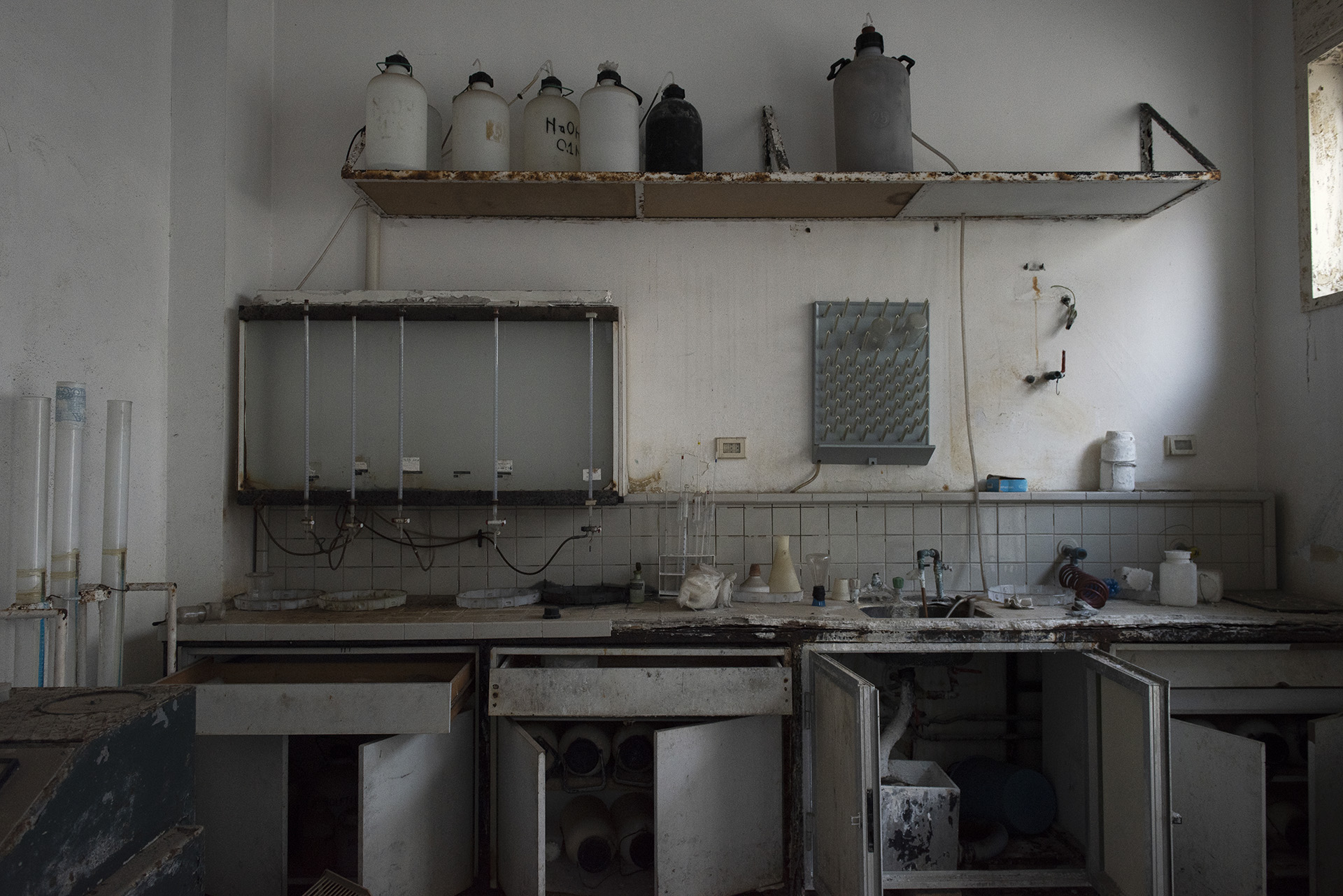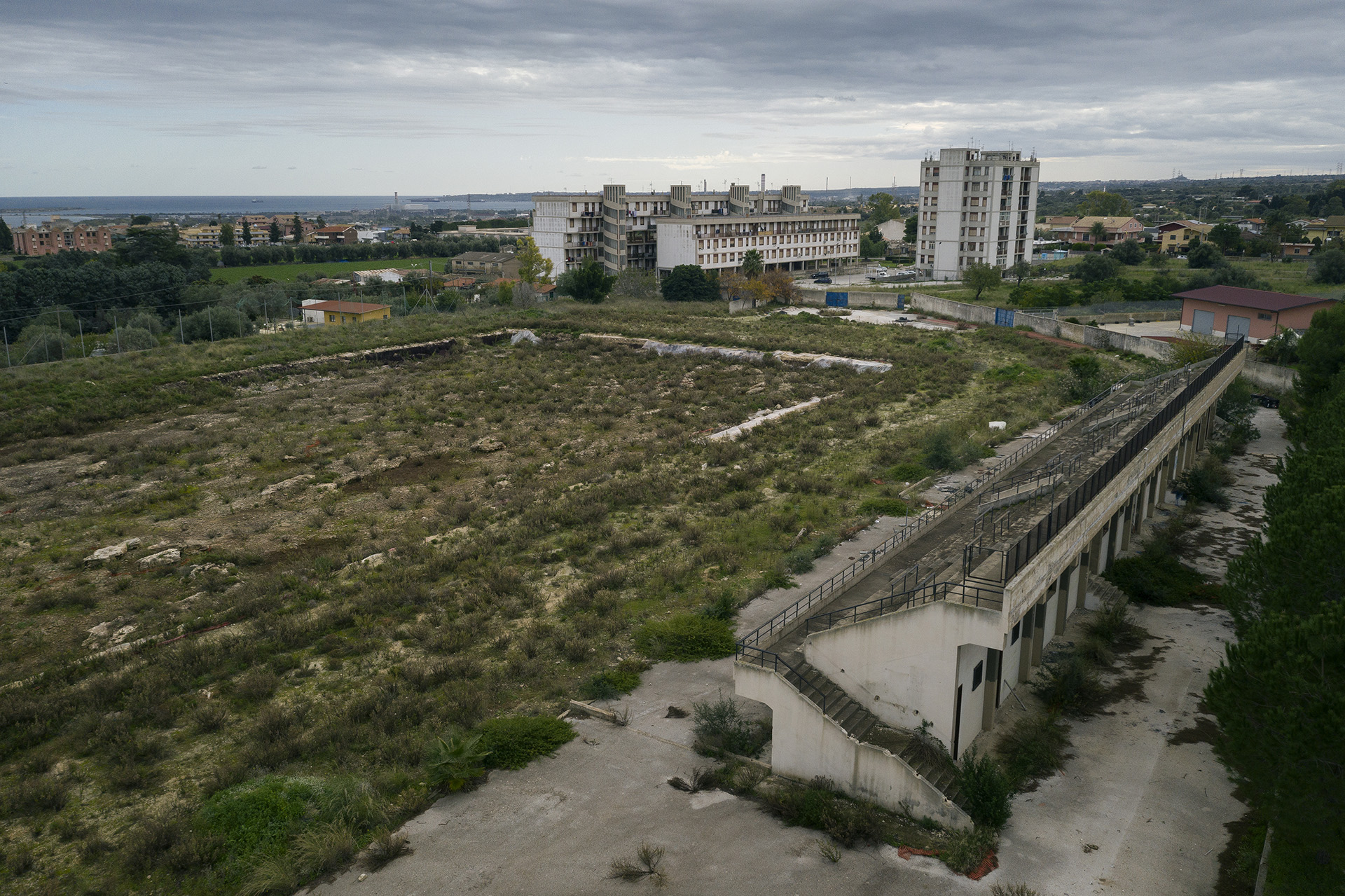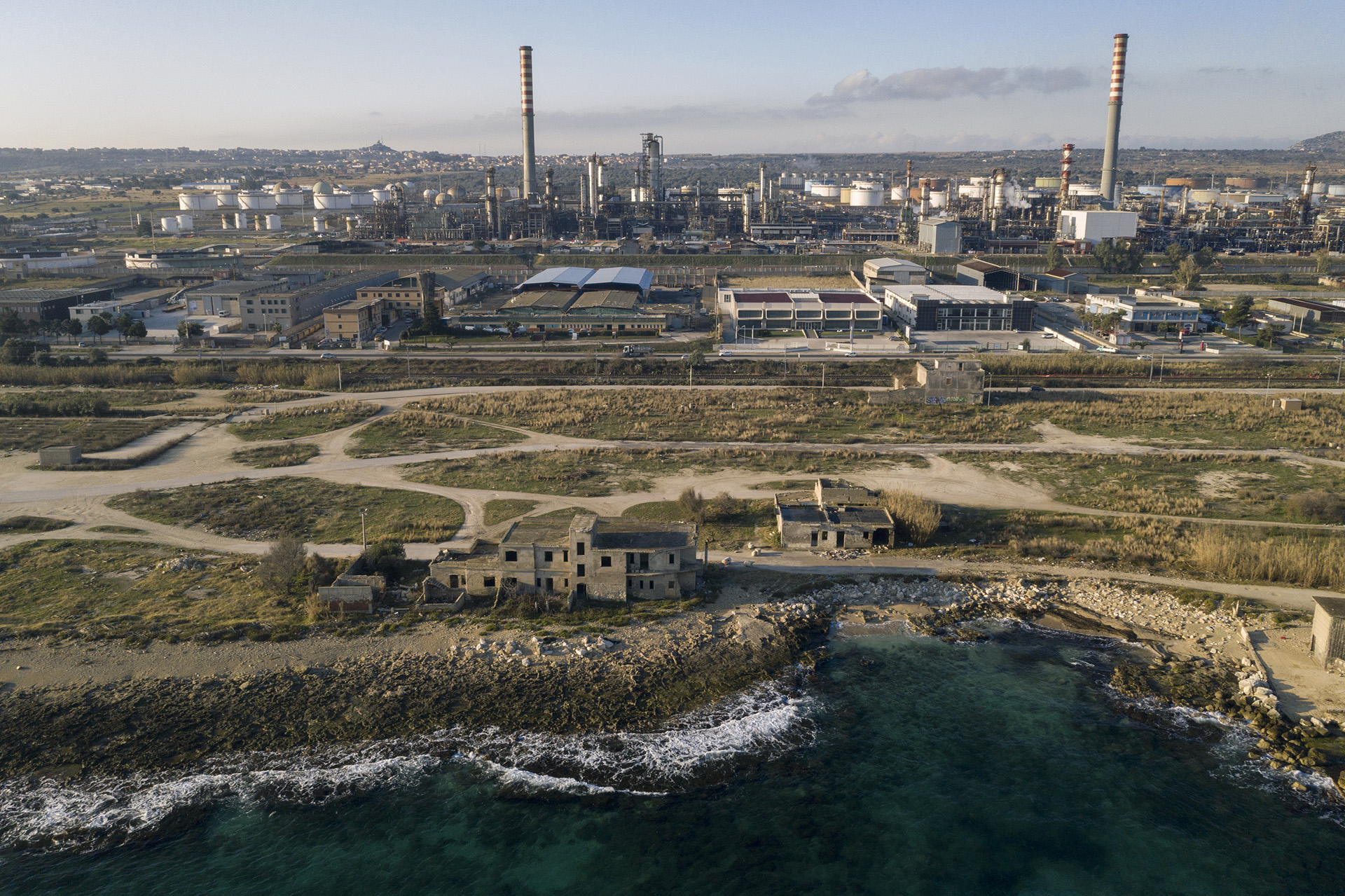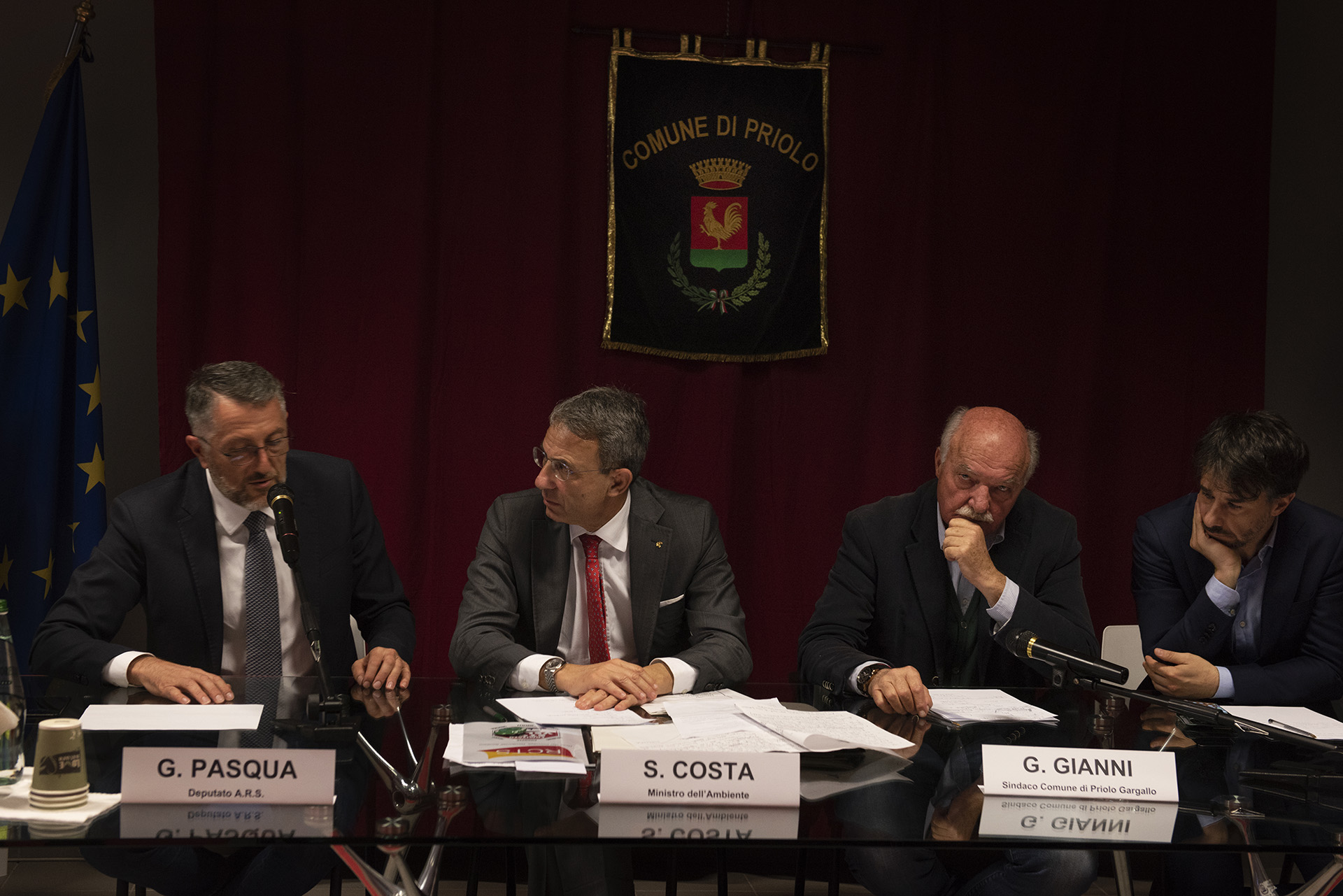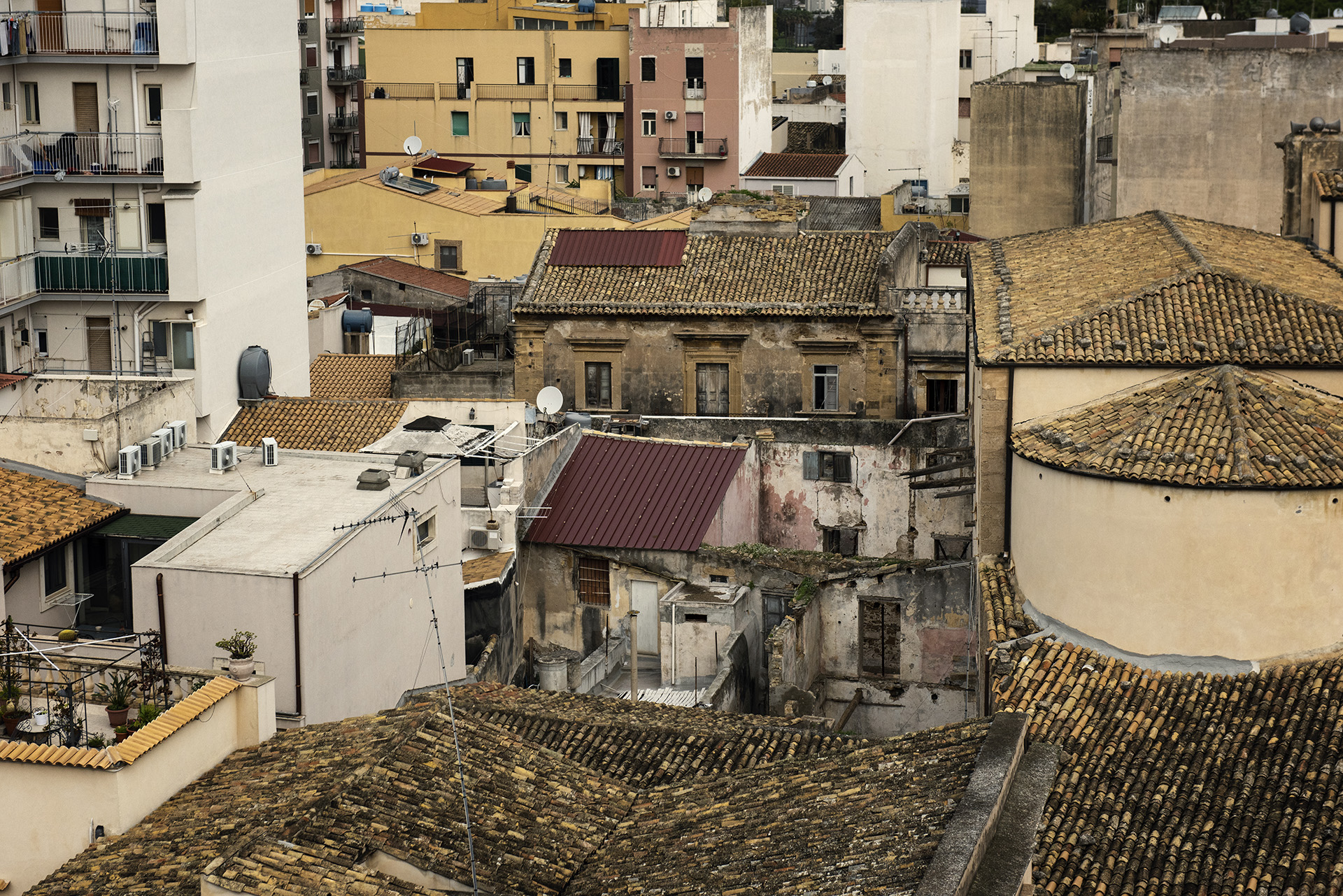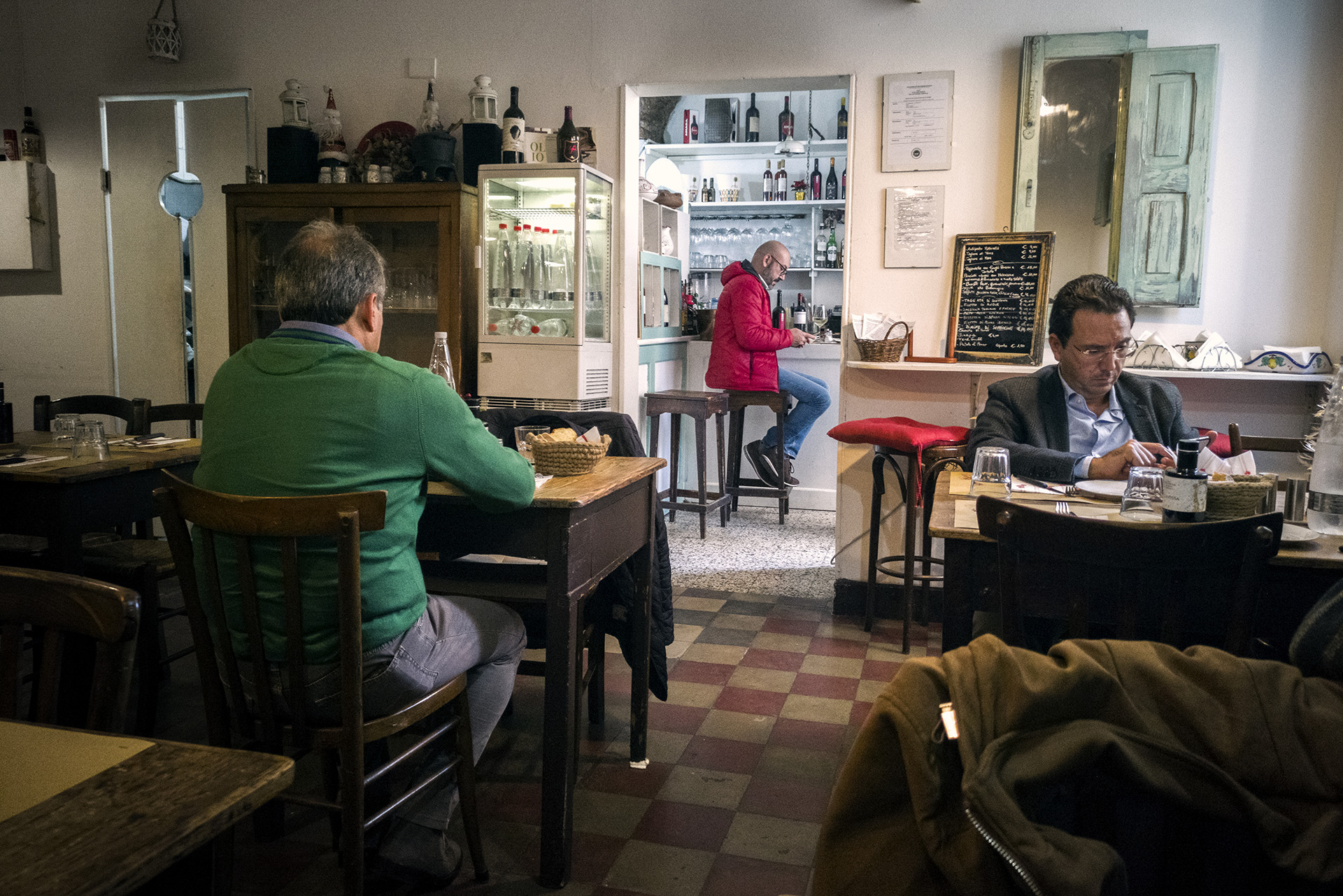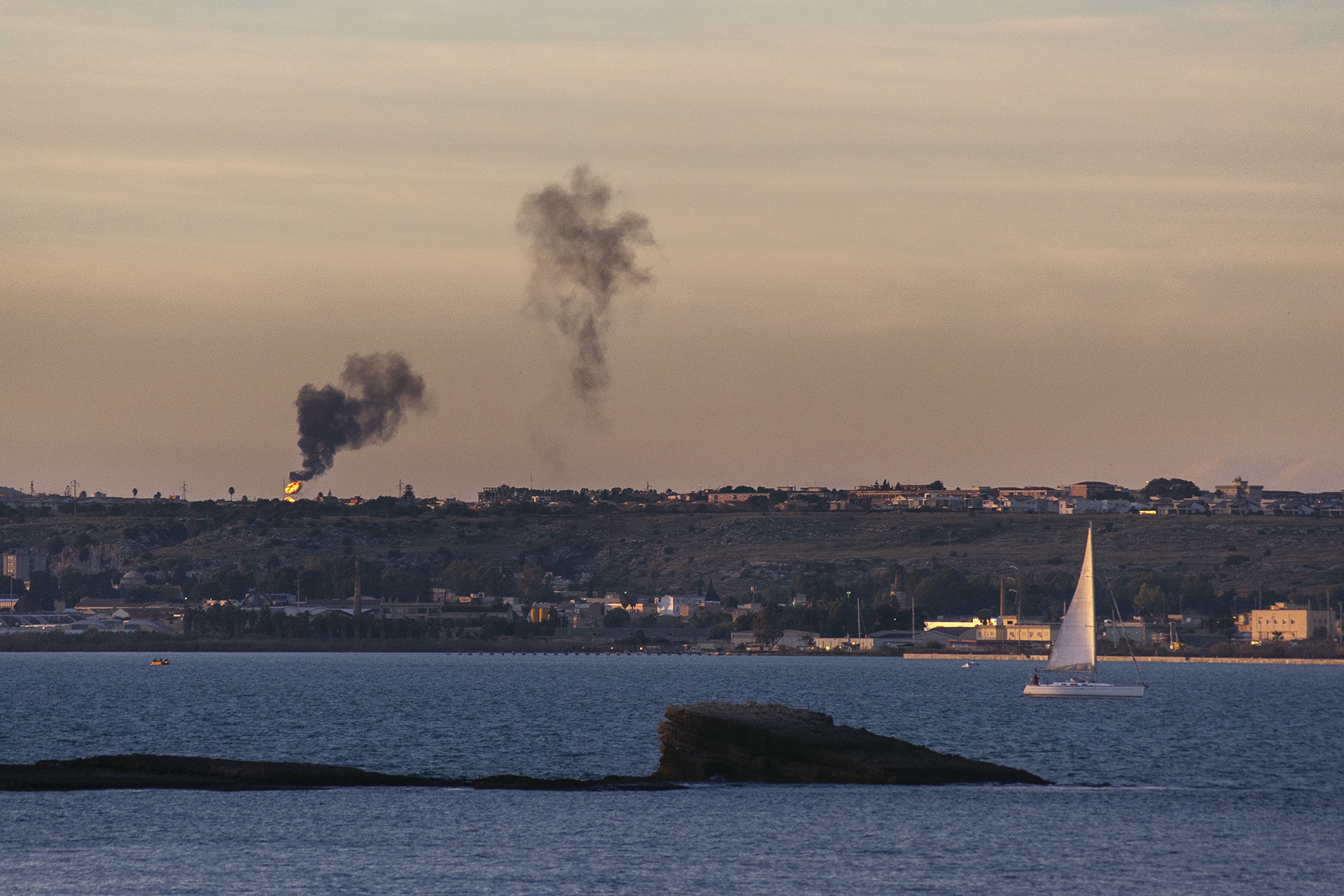Sacrifice
2019 in collaboration with Ecole Urbaine de Lyon
A strategic site
Augusta-Priolo, one of the largest petrochemical complexes in Europe, stretches over 20 km of coastline along the Ionian Sea, between Augusta Bay and northern Syracuse in Sicily. It alone ensures 34% of the production of petroleum products in Italy.The development of this industrial site began in 1949 with funding from the Marshall Plan. A bottomed bay, abundant fresh water resources, a favorable geopolitical position in the heart of the Mediterranean and cheap labor stimulate the construction of a network of interconnected factories over several years. Refineries, power plants, factories producing asbestos, cement, chemicals (fertilizers, polyethylene) take over the Sicilian coast. Augusta-Priolo quickly became one of the economic lungs of Italy, employing up to 20,000 people in the 1980s.
Pollution and impact on health
This strong industrialization was accompanied by uncontrolled pollution of the ecosystem. It was reinforced by the presence of criminal networks that were acting in interaction with the public authorities and taking advantage of the silence of the population subject to the fear of economic collapse in the case of plants closure.Excessive emissions, illegal dumping of industrial waste, discharge of toxic sludge and mercury into the sea are undermining the local ecology. Since 1959, it is estimated that more than 500 tonnes of mercury have been released into Augusta Bay.According to research by doctor Giacinto Franco, the death rate from cancer in the population of the area increased from 8.9% in 1951 to 29.9% in 1980. The rate of infantile malformations have grown from 1.9% in 1989 to 5.6% in 2000, resulting in an abortion rate 4 times higher than in the rest of Italy.
Government actions
In 1998, 5,815 ha of coastline and 10,068 ha of marine land were classified as a Site of National Interest (SNI) by the Italian government, which should in fact lead to immediate decontamination of the soil, as well as surface and groundwaters.Today, only a small part has really been implemented. The Italian legislative system does not regulate the emissions of several substances: non-methane hydrocarbons (NMHC), hydrogen sulfide (H2S), volatile organic compounds.To this must be added inconsistency decision-making, such as the transfer of waste from the metallurgical complex of Taranto to a municipal landfill in 2015.
About 120,000 inhabitants living in the municipalities of Augusta, Priolo, Milelli, in the north of Syracuse are concerned directly or indirectly.‘Sacrifice’ tries to testify to the human and environmental drama that is played out in the Sicilian silence.



